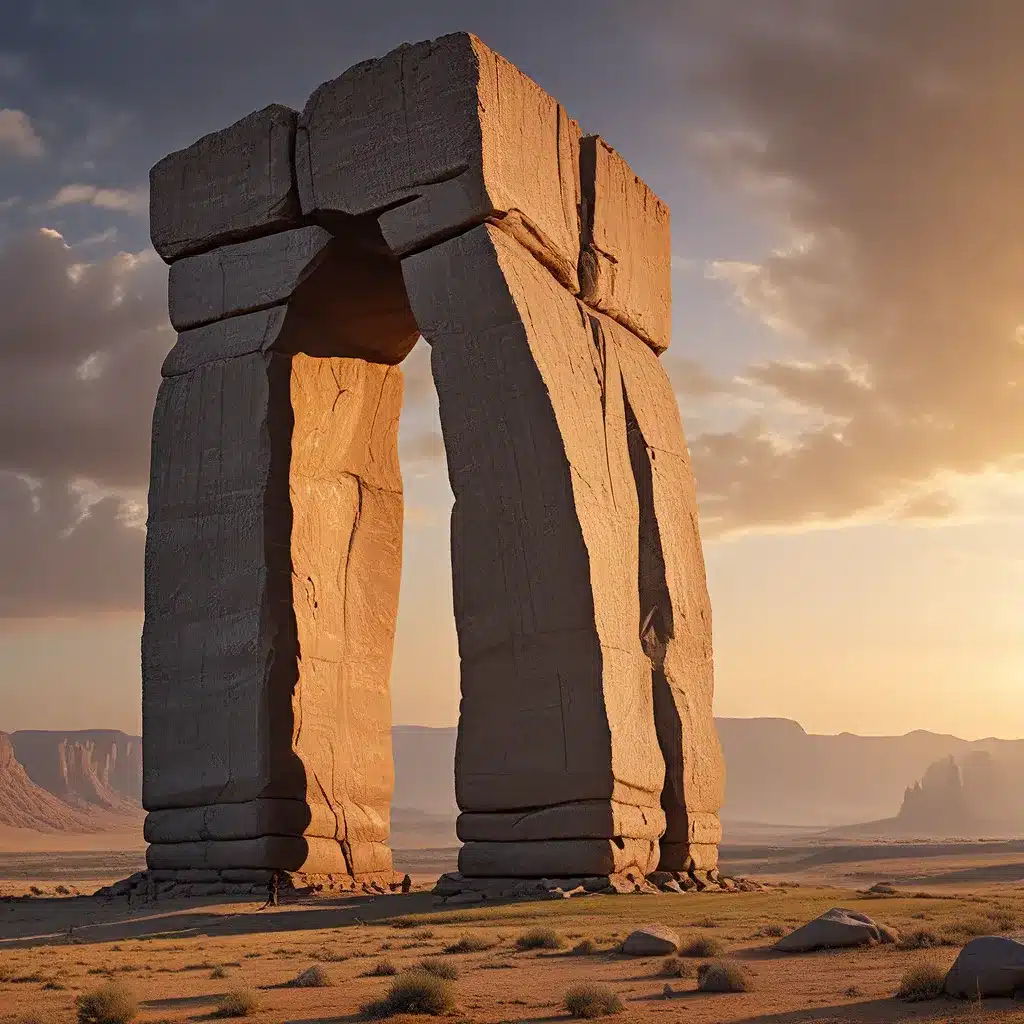
From the towering Pyramids of Giza to the enigmatic Yonaguni Monument, the architectural marvels of ancient civilizations have long captivated the imagination of scholars, engineers, and laypeople alike. These colossal structures, built with seemingly rudimentary resources, stand as enduring testaments to human ingenuity and creativity, challenging our understanding of the past.
The Enigma of Stonehenge
One of the earliest examples of this ancient engineering prowess is the Stonehenge in Wiltshire, England. Erected around 2500 BC, this prehistoric monument comprises several massive stones, the largest of which weigh up to 30 tons. The arrangement of these giant rocks into a circular formation involved a combination of simple machines, such as levers, sledges, and ropes, as well as substantial human and animal labor.
The true mystery, however, lies in the transportation of these stones. Recent research suggests that the builders may have used a series of sledges and rollers to move the monoliths over land and rafts over water, with some originating from quarries nearly 200 miles away. This feat of logistics and coordination is a testament to the ingenuity and organizational abilities of the prehistoric cultures that constructed Stonehenge.
The Pyramids of Giza: Masterpieces of Ancient Engineering
Perhaps the most iconic ancient engineering marvels are the Pyramids of Giza, especially the Great Pyramid of Khufu. Constructed around 2600 BC, the pyramids’ construction involved intricate planning and a sophisticated understanding of astronomy. Each pyramid was oriented to the cardinal points – north, south, east, and west – indicating a deep comprehension of the Earth’s rotation.
The method of construction for the pyramids remains a subject of debate, but many scholars believe it involved a system of ramps and levers to hoist and position the massive stone blocks. The recent internal ramp theory suggests that the ancient Egyptians built a spiraling ramp within the pyramid, allowing workers to haul the hefty stones to the top. This ingenious design underscores the ancient Egyptians’ advanced understanding of physics and structural engineering.
The Architectural Mastery of the Romans: The Colosseum
The Colosseum or the Flavian Amphitheatre stands as a symbol of the architectural and engineering prowess of the Roman Empire. Built from concrete and sand, it is the largest amphitheater in the world and a testament to the power of Roman engineering.
The Romans employed a combination of arches, vaults, and concrete to create a free-standing structure with a complex network of passages, rooms, and seating areas. Their mastery of concrete was pivotal in the Colosseum’s construction, as they used a mix of volcanic ash, lime, and seawater to create a type of concrete that would set underwater. This innovation allowed them to construct sturdy and durable structures, as evidenced by the Colosseum’s survival through earthquakes and centuries of wear and tear.
The Enigmatic Yonaguni Monument: A Puzzle in the Deep
Nestled along the southern coast of Yonaguni, Japan, lies an even more enigmatic set of submerged ruins that have captured the fascination of researchers and ignited fervent debates. Believed to date back approximately 10,000 years, the origin of the Yonaguni Monument remains shrouded in mystery, with experts divided on whether these formations are man-made or the result of natural phenomena.
The unique and awe-inspiring site was discovered in 1995 by a diver who stumbled upon the sunken arrangement of monolithic blocks that appeared to be terraced into the side of a mountain. The structure sparked instant controversy and attracted crowds of diving archaeologists, media, and curious hobbyists, none of whom were able to ascertain its true identity.
Subsequent investigations revealed many surprising findings, including what appears to be a massive arch or gateway of huge stone blocks that fit together perfectly, as well as right-angled joins, carvings, and features resembling stairways, paved streets, crossroads, and grand staircases leading to plazas surrounded by towering features resembling pylons.
While some scientists, such as Professor Masaaki Kimura and explorer Graham Hancock, believe that the Yonaguni Monument is the remnant of an ancient, submerged city, others, like geologist Robert Schoch, attribute the site’s features to natural phenomena, such as tectonic movements and erosion. The debate continues, with researchers employing cutting-edge technologies like underwater sonar mapping, 3D modeling, and geophysical studies to unravel the mysteries surrounding this enigmatic site.
Legacies of Ancient Engineering
The engineering feats of ancient civilizations continue to inspire awe and wonder, even in our technologically advanced era. Despite the absence of modern tools and equipment, these cultures demonstrated an incredible understanding of engineering principles, materials, and the natural world around them. They used their resources ingeniously to construct monumental structures that would stand the test of time, serving as lasting legacies of their ingenuity and creativity.
These ancient architectural triumphs also serve as reminders of human potential and problem-solving abilities. As we continue to explore and innovate, we carry forward the torch of human creativity first ignited by our ancient forebears, marveling at their tenacity and vision. By studying these remarkable achievements, we not only deepen our understanding of the past but also gain insights that may inspire future generations to push the boundaries of what is possible.
The journey of unraveling the mysteries of ancient engineering is an ongoing one, with each new discovery and technological advancement shedding light on the ingenuity and resourcefulness of our ancestors. As we delve deeper into the past, we find ourselves in awe of the monumental structures that have stood the test of time, reminding us of the enduring power of human innovation and the endless possibilities that lie within our collective potential.


